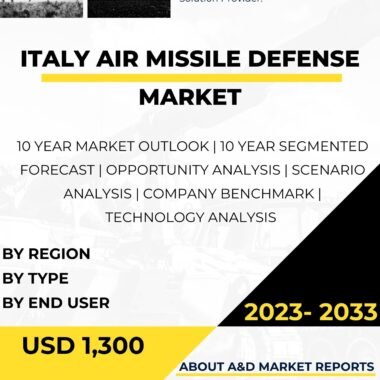Description
Canada’s adoption of Active Electronically Scanned Array (AESA) radar represents a significant advancement in its military capabilities, offering enhanced surveillance, target detection, and situational awareness. AESA radar is a sophisticated technology that provides numerous advantages over traditional mechanically scanned radar systems. Its incorporation into Canada’s defense arsenal has revolutionized aerial and maritime surveillance, enabling the Canadian Armed Forces to respond effectively to emerging threats and complex operational environments.
AESA radar technology is based on a solid-state array of transmit and receive modules, allowing for rapid and independent beam scanning. Unlike mechanically scanned radars, AESA radar does not rely on moving parts for beam steering, resulting in higher reliability, reduced maintenance requirements, and increased operational availability.
One of the primary advantages of AESA radar is its capability to perform multiple functions simultaneously. The array’s ability to steer multiple beams independently enables AESA radar to conduct surveillance, track multiple targets, and engage threats all at the same time. This multi-functionality significantly enhances Canada’s military capabilities, providing real-time situational awareness and responsiveness to evolving threats.
AESA radar’s agility in beam scanning allows for faster target acquisition and improved tracking accuracy. This rapid scanning ability enables AESA radar to respond swiftly to changing threats, providing early warning and increasing reaction time. The radar’s precision in target tracking ensures that potential threats are continuously monitored, and accurate information is provided to decision-makers.
Furthermore, AESA radar exhibits low probability of interception and low probability of detection characteristics, making it difficult for adversaries to detect or jam the radar’s emissions. This stealthy attribute enhances the survivability of Canada’s military assets, ensuring that they can operate effectively in contested environments without being compromised by enemy countermeasures.
AESA radar is well-suited for integration into a wide range of military platforms, including fighter aircraft, airborne early warning and control (AEW&C) aircraft, maritime patrol aircraft, and naval vessels. The versatility of AESA radar technology allows Canada’s defense forces to deploy these radar systems across various operational domains, enabling seamless communication and data sharing between different platforms.
The incorporation of AESA radar into Canada’s fighter aircraft, such as the CF-18 Hornet, significantly enhances their air superiority and situational awareness capabilities. AESA-equipped fighter aircraft can detect and track multiple targets at extended ranges, providing an edge in air-to-air engagements and improved target identification in complex airspace environments.
In the maritime domain, AESA radar on naval vessels and maritime patrol aircraft enhances Canada’s ability to detect and track surface vessels and airborne threats, ensuring maritime security and supporting search and rescue operations. AESA radar’s ability to scan large areas and detect small objects in cluttered environments proves vital for monitoring coastal borders and enforcing maritime sovereignty.
In addition to its military applications, AESA radar also contributes to civil aviation and air traffic control. AESA-equipped air traffic control radars offer improved accuracy and resolution, enabling more efficient and safer management of air traffic in congested airspace.
The adoption of AESA radar in Canada is a result of collaboration between the Canadian government, defense industry, and international partners. Domestic defense companies, in partnership with global radar technology leaders, have played a pivotal role in developing and producing AESA radar systems that meet Canada’s specific operational requirements.
Furthermore, Canada’s participation in multinational collaborative defense programs has provided access to cutting-edge AESA radar technology. Collaborative projects have allowed Canada to acquire advanced radar capabilities while also promoting industrial cooperation and technology transfer among partner nations.
Research and development efforts continue to drive advancements in AESA radar technology. Ongoing innovation focuses on increasing radar sensitivity, improving signal processing algorithms, and enhancing radar range and resolution. These efforts ensure that AESA radar remains at the forefront of technological innovation and that Canada’s defense forces continue to benefit from the latest advancements in radar technology.
As with any advanced technology, the integration of AESA radar also raises ethical and policy considerations. The increased capabilities of AESA radar systems must be accompanied by clear rules of engagement and operational guidelines to ensure the responsible and lawful use of radar technology during military operations.
Moreover, AESA radar’s versatility and multi-functionality present opportunities for further optimization through data fusion and integration with other sensor systems. The integration of AESA radar with other intelligence, surveillance, and reconnaissance (ISR) assets, such as satellites, drones, and ground-based sensors, can enhance overall situational awareness and support decision-making in complex operational scenarios.
In conclusion, Canada’s adoption of Active Electronically Scanned Array (AESA) radar represents a transformative advancement in its military capabilities. AESA radar’s multi-functionality, rapid scanning ability, and stealth characteristics provide Canada’s defense forces with enhanced surveillance, target detection, and situational awareness.
AESA radar technology’s integration into fighter aircraft, naval vessels, and airborne early warning platforms strengthens Canada’s air and maritime superiority, ensuring the nation’s security and sovereignty. Ongoing research and development efforts, along with collaboration with domestic and international partners, drive continuous innovation in AESA radar technology, keeping Canada’s defense forces at the forefront of radar capabilities.
The responsible and strategic use of AESA radar, guided by clear operational guidelines and ethical considerations, further reinforces Canada’s commitment to maintaining a credible and effective defense posture. As the nature of warfare continues to evolve, the integration of AESA radar technology ensures that Canada remains equipped to respond to emerging threats and challenges, safeguarding national security and contributing to international peace and stability.




